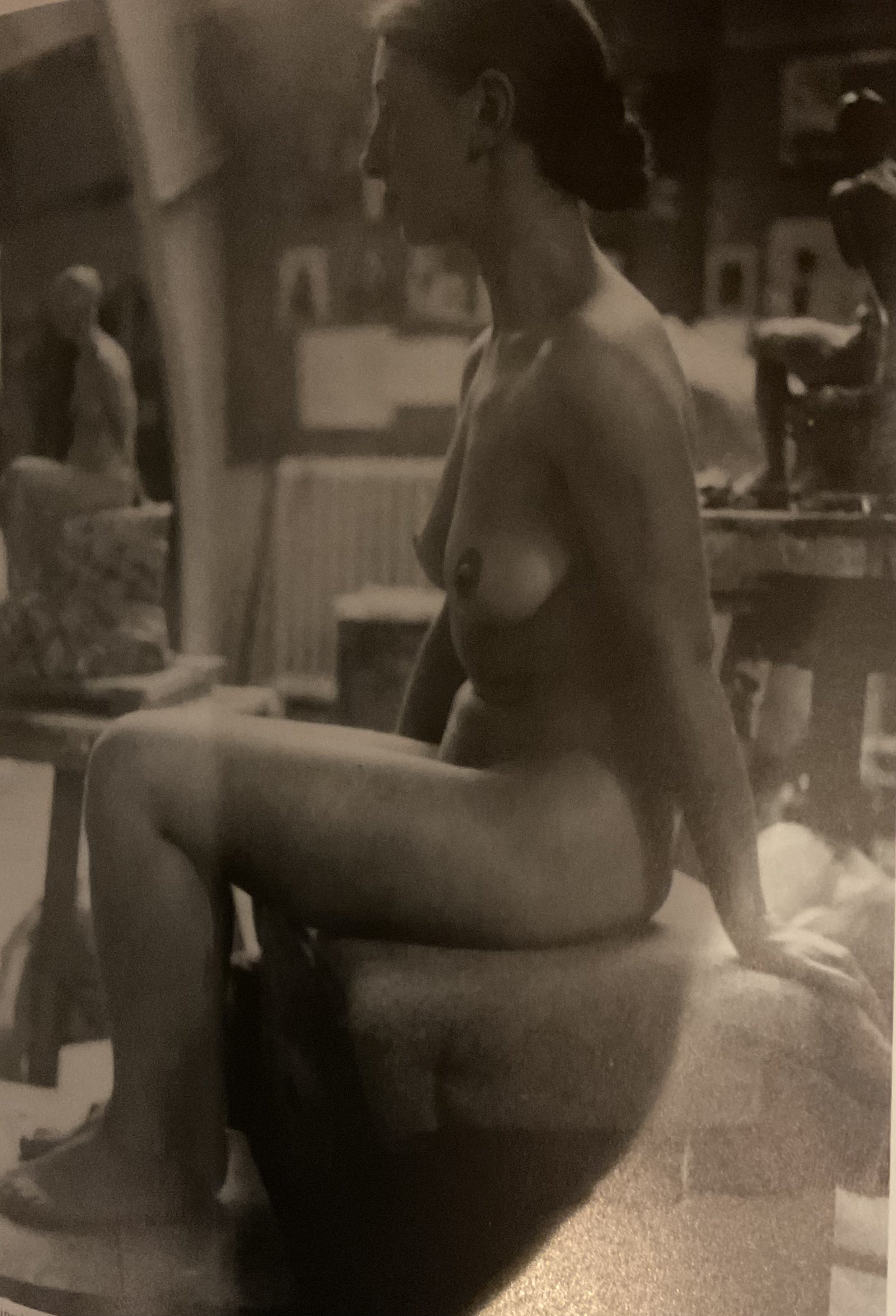The early drypoint emerged from Frank Auerbach’s student work and they have a real sense of creative tension arising from reworking the plate and never being fully comfortable with the image . Indeed the artist himself acknowledges this as being a positive in his work and said
‘Most things I’ve done that might have any quality have been chewed up, worked over and redone; although I would not manufacture it, I quite like to see the traces of effort in things ‘
Well these early drypoints from 1954 are a case in point and were completed when he was still a student at the Royal college of Art. They are based on six life drawings chosen from several hundred that he made over the preceding years and they were executed by the most direct means possible . One ‘ Reclining nude’ is known to be based on the original drawing of 1952 in the collection of Leon Kossoff ; ‘seated nude with hands above her head’ is based on the drawing of January 1951 in the collection of Garda Boehm; ‘nude in a folding chair ’ is based on a drawing of November 1953 in the collection of Philip Holmes ; while ‘ nude in profile ‘ a 1953 drawing in the collection of Keith Critchlow.
When asked about the set the artist said
‘ These were all based on drawings at the Royal College of Art or Borough Polytechnic. I chose six drawings which were fairly fresh in my mind, out of several hundred…….These drypoint were scratched on to alloy six inches square , bought from Romany’s of Camden High Street for 6d. Each. They were all done with a nail, set into a pen holder with sealing wax, and printed by rubbing the back of a spoon over the back of the dampened paper. It was very laborious; there was a lot of burnishing. There was never a formal edition . I think there may be a dozen complete sets , they belong mostly to friends, often painters ‘
The marks of rubbing with a spoon are clearly visible on the backgrounds on the images , they were all achieved by trial and error with much polishing to polish away unwanted lines and in some places the actual prints have suffered cuts from the pressure of the spoon on the rough burred edges of the scratched line. There is also variation between sets as some prints exist in different states and Auerbach made up some sets with earlier proofs that he had made before burnishing away or adding to the plate.
So who had these sets gifted to them , who were the friends ? Well we do not know where all of them are, but we do know that James Kirkham had a set of six , which are now with the Fitzwilliam Museum, Cambridge, as did Leon Kossoff and R. B. Kitaj . We can speculate who the other friends were but I am unaware of a record of exactly who had them and how they came to be gifted to them. However we do know about the set of 5 that we hold in our personal collection . These were gifted to the beautiful life model June Furlong and this is her story of how she came to own a set of 5 drypoints as shown below .
June came from a wealthy family in Liverpool and was born in 1930. She came to London in the 1950’s and modelled at the RA and RCA for many famous artists . In her book ‘June - a life study’ she explains how she was a close friend of Lucien Freud, but first met Frank Auerbach at the RCA in a life class. They became closer over the following months after a night in the Studio Club in Swallow Street, off Piccadilly.
June recalls his studio as being ‘a bit of a dump, the floor squelched as you walked as it had paint all over it’. She explains how Frank never had much money and she always kept an eye on him as they were good friends.
June was such a beauty that she was a well known to all sections of the London scene including the more criminal element . She recalls being given a box of £5 notes to look after by a ‘car dealer’ and told she could spend whatever she wanted . She said it paid for her rent and Harrods shopping!
“Frank Auerbach saw all this money constantly carried around by me in a brown bag for emergencies. I offered him £5 to help him out, a lot of money then. He said he could not possibly take it, so I quickly offered to buy some of his etchings as a fair exchange. Frank agreed that he could accept the £5 in return for his work, so I got the (5) etchings and he got the £5. He went straight out to buy bread, tea and more paint! I went off with the etchings and had them all identically framed at the Royal Academy where I was working and have cherished them ever since.”
Well we still cherish them and they have pride of place in our collection . They have retained the original frames and still look as beautiful as June did when she sat for the artist.
Thank you June for ensuring the story of these 5 etchings will not be forgotten !
June Furlong (3 June 1930 – 20 November 2020)

